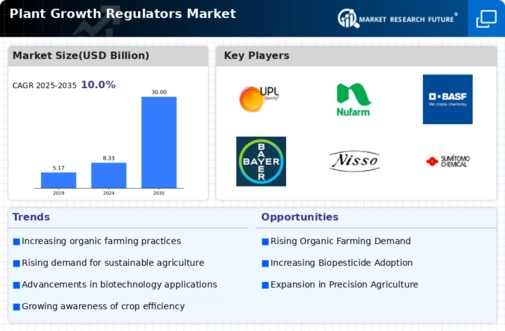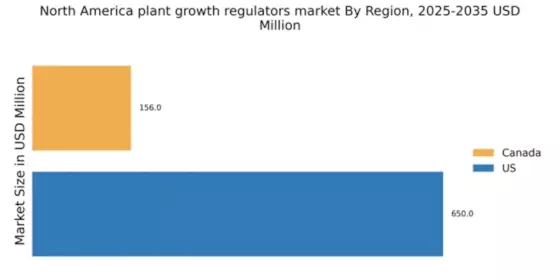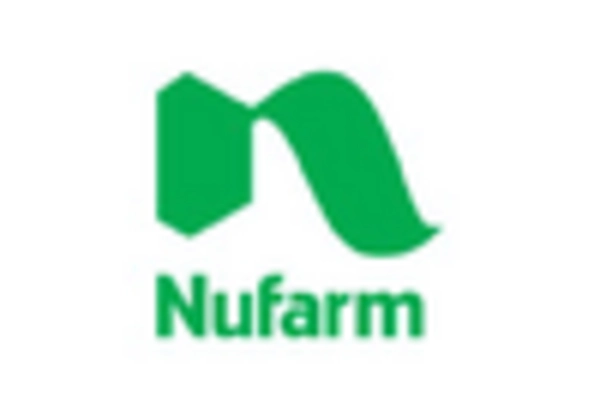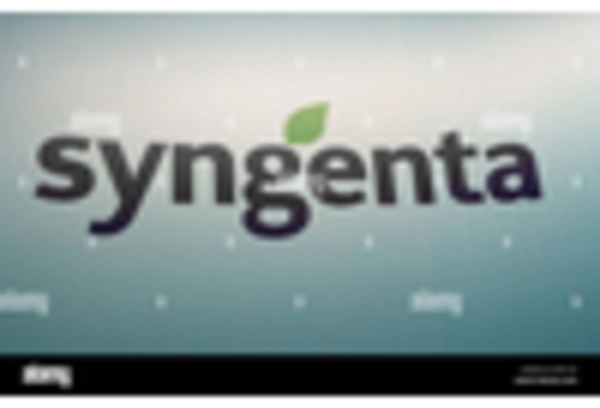Climate Change Adaptation Strategies
The effects of climate change are prompting farmers to adopt new strategies to ensure crop resilience, thereby driving the plant growth-regulators market. With unpredictable weather patterns and increased pest pressures, growers are turning to plant growth regulators to enhance plant stress tolerance and optimize growth conditions. The market is projected to grow by approximately 8% annually as farmers seek solutions to mitigate the adverse effects of climate change. The plant growth-regulators market is thus positioned to benefit from the increasing need for adaptive agricultural practices that can withstand environmental challenges.
Increasing Demand for Organic Produce
The rising consumer preference for organic produce is a pivotal driver in the plant growth-regulators market. As consumers become more health-conscious, the demand for organic fruits and vegetables has surged. This trend is reflected in the market, where organic produce sales have increased by approximately 10% annually in North America. Consequently, farmers are increasingly utilizing plant growth regulators to enhance crop yield and quality while adhering to organic standards. The plant growth-regulators market is thus witnessing a shift towards products that align with organic farming practices, ensuring that growers can meet consumer expectations without compromising on sustainability.
Technological Advancements in Agriculture
Technological advancements in agriculture are reshaping the plant growth-regulators market. Innovations such as precision agriculture and data analytics enable farmers to apply plant growth regulators more effectively, optimizing their usage and enhancing crop performance. The integration of drones and IoT devices allows for real-time monitoring of crop health, leading to more informed decisions regarding the application of growth regulators. This trend is expected to drive market growth by approximately 12% over the next five years. The plant growth-regulators market is thus evolving, with technology playing a crucial role in improving agricultural efficiency and productivity.
Rising Awareness of Crop Health Management
There is a growing awareness among farmers regarding the importance of crop health management, which is significantly influencing the plant growth-regulators market. As agricultural practices evolve, farmers are increasingly recognizing the role of plant growth regulators in enhancing crop quality and yield. Educational programs and workshops are being implemented to inform growers about the benefits of these products. This heightened awareness is expected to contribute to a market growth rate of around 9% in the coming years. The plant growth-regulators market is thus likely to see increased adoption as farmers prioritize effective crop management strategies.
Regulatory Support for Agricultural Innovation
Regulatory frameworks in North America are increasingly supportive of agricultural innovation, which significantly impacts the plant growth-regulators market. Government initiatives aimed at enhancing food security and agricultural productivity encourage the adoption of advanced agricultural technologies. For instance, the USDA has allocated over $1 billion to support research and development in sustainable agriculture. This funding facilitates the development of new plant growth regulators that can improve crop resilience and yield. As a result, the plant growth-regulators market is likely to expand, driven by innovations that comply with regulatory standards and promote sustainable farming practices.


















Leave a Comment